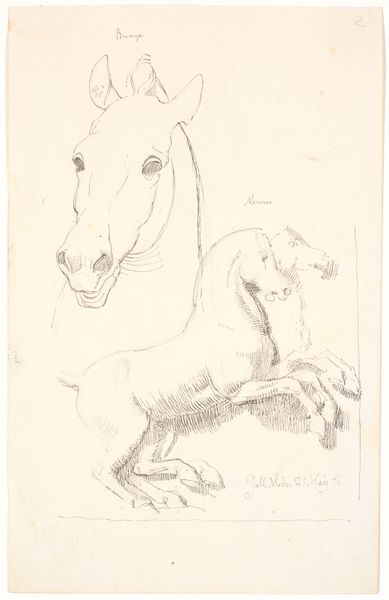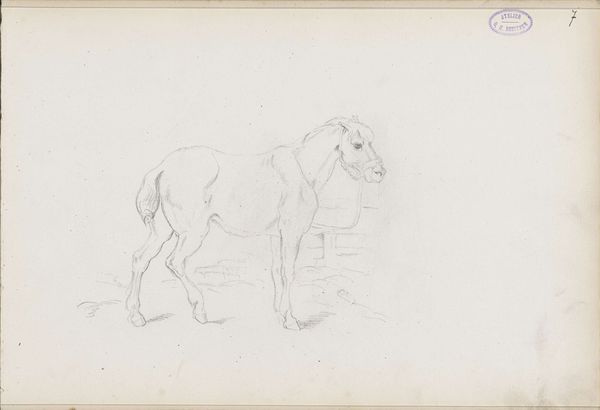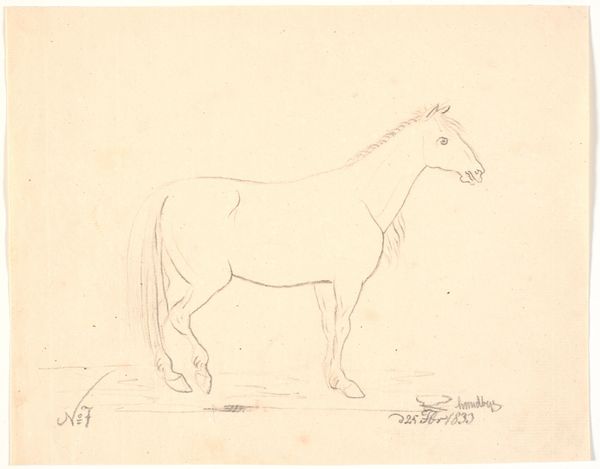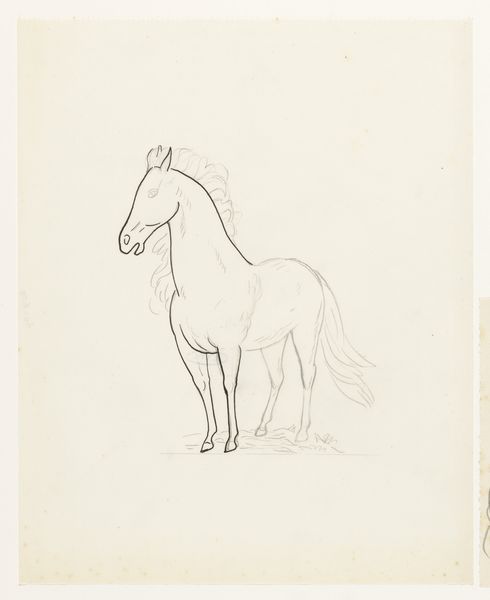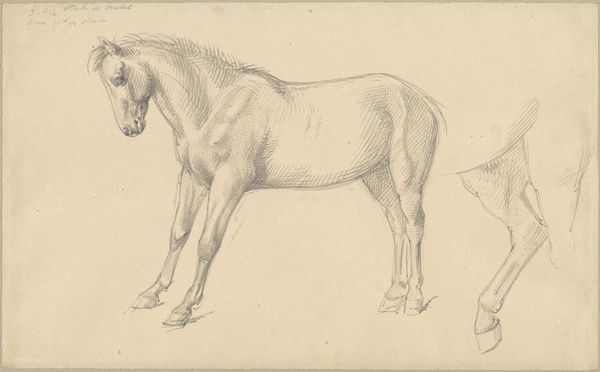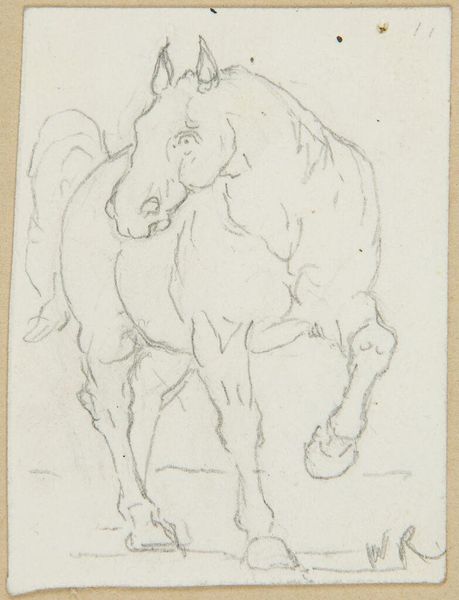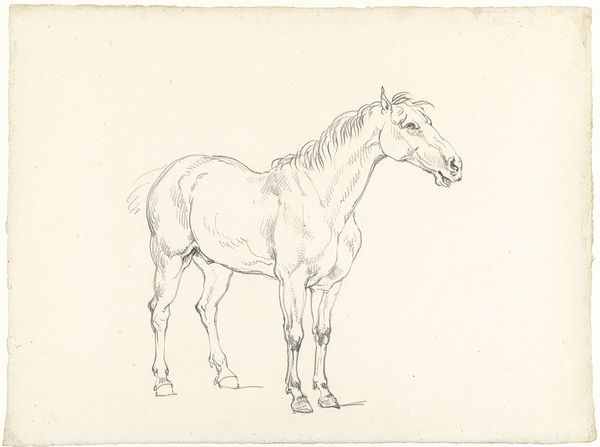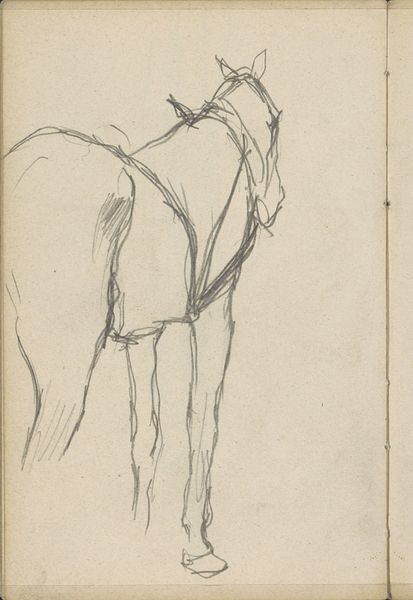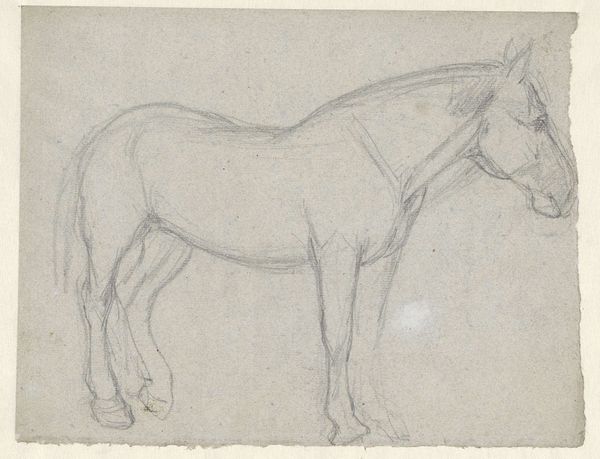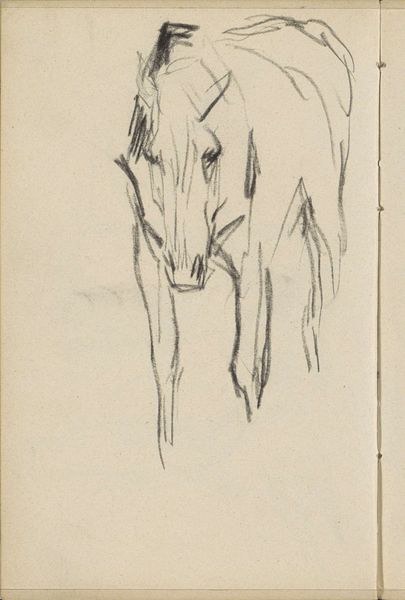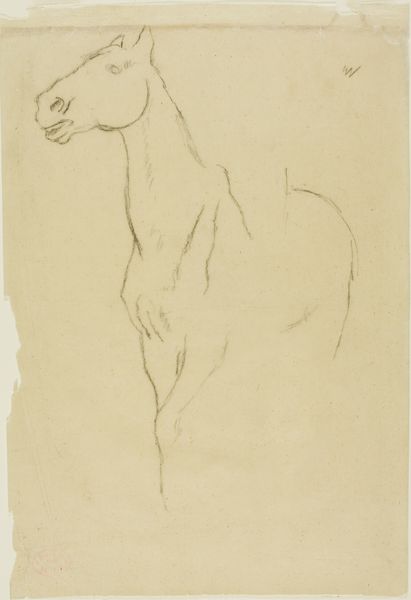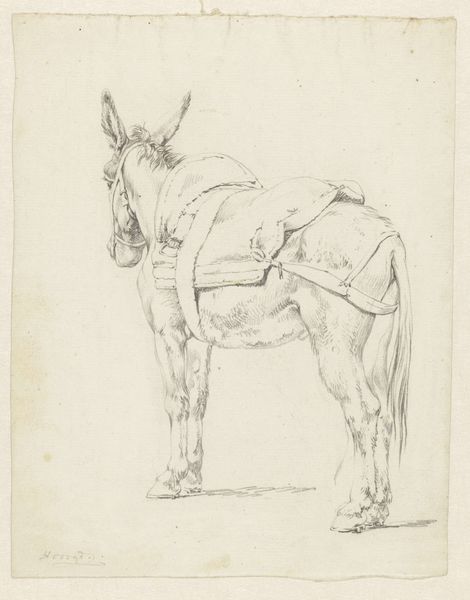
drawing, paper, pencil, graphite
#
drawing
#
landscape
#
figuration
#
paper
#
form
#
pencil
#
horse
#
line
#
graphite
#
realism
Copyright: Rijks Museum: Open Domain
This sketch of a stepping horse was made by Adrianus Eversen in the 19th century. The horse has long been a symbol of power, freedom, and nobility across cultures. Here, the horse is captured mid-stride, its movement imbued with potential energy and latent power. One can see echoes of this motif in earlier equestrian statues of Roman emperors, where the horse signified imperial authority and triumph. Consider, too, the horses in Paolo Uccello’s “Battle of San Romano,” where the dynamic poses of the horses heighten the drama and chaos of war. This symbol recurs, yet evolves, reflecting shifts in cultural values. The unbridled horse, in particular, becomes a potent symbol of untamed desire and instinct. The horse engages us on a subconscious level; a visceral connection to our primal selves and our deep-seated yearning for liberation. The image is not merely a representation but an emotional and psychological force. We can feel the weight of history—the collective memory of shared experiences and subconscious yearnings—embedded within this seemingly simple sketch. The symbol of the horse embodies a non-linear, cyclical progression that has resurfaced, evolved, and taken on new meanings in diverse historical contexts.
Comments
No comments
Be the first to comment and join the conversation on the ultimate creative platform.

